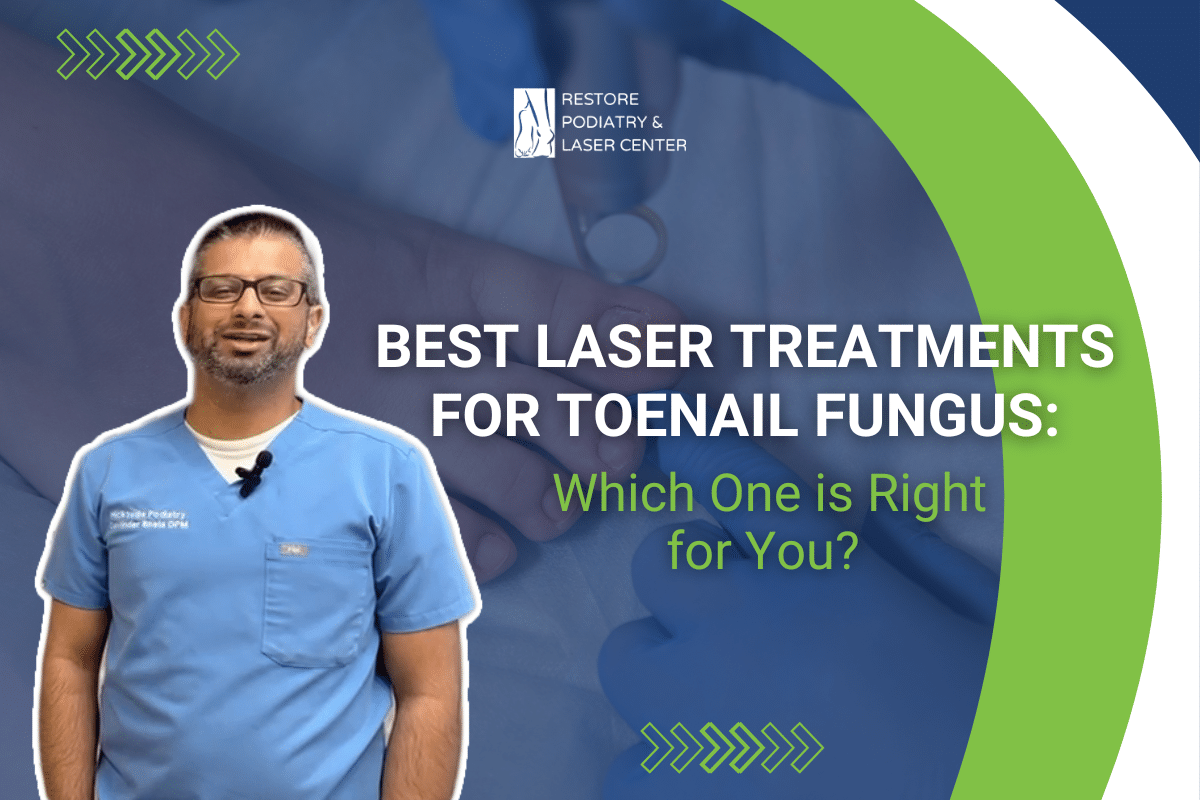Best Laser Treatments for Toenail Fungus: Which One is Right for You?

Many people are embarrassed to show their crumbling and discolored toenails. Toenail fungus infections are very common and can be quite unsightly. However, there are treatment options that ensure this infection is removed. One of these treatment options is laser treatment. It is a new and promising treatment option that totally eliminates toenail fungus.
For individuals who have tried everything from topical antifungal, oral medication, home remedies or creams, laser treatment is an excellent option. Laser therapy uses light energy to destroy toenail fungus.
In this blog, we will explore various laser treatments so individuals can properly understand the best treatments for toenail fungus and the right one.
Treating Toenail Fungus Infections
Toenail fungus doesn’t go away on its own. When left alone, it can get worse and even cause pain. Therefore, it must be treated, and until you are unaffected, you can spread toenail fungus to others both directly and indirectly.
Initially, topical and oral medications, such as antifungal targeting fungus beneath the nails, were used to treat the infections. However, this was limited since it was hard to get to the infection beneath the toenail, and oral antifungal medications needed many doses with side effects. However, toenail fungus treatment with laser offers a painless option for treating infections without oral medication, and topical treatments.
How Does Laser Treatment Work For Toenail Fungus Infections
Laser light is pointed at the toenail, which passes through the nail and gets to the fungal infection beneath it. The laser eliminates the fungus that causes the infections and returns the nail to normal thickness and color. However, note that you might require several treatments, and the results might not be visible immediately. You can read further on toenail fungus treatment with laser on the National Library of Medicine website.
Types of Laser Treatments
Two types of laser treatment effectively eliminate toenail fungus. They are hot laser treatment and cold laser treatment. The hot laser treatment bypasses the nail and creates heat at the injection site under the nail plate. This destroys the fungal cells before they reach the healthy cells, which are pain-free. Usually, what most individuals feel is a warm sensation on their toes.
On the other hand, the cold laser treatment simultaneously directs two low-level beams to the nails, damaging the fungus and clearing the infection. Since the beams don’t generate heat, they are called cold lasers. Hence, the treatment is pain-free, safe, and does not have side effects. Let’s look at some types of laser treatments used to treat toenail fungus.
1. Lunula Laser Therapy
Lunula cold laser therapy removes fungal infections and treats other skin and nail diseases. Compared to topical treatments, oral medications, home remedies, or thermal lasers. The lunula laser uses two rotating laser beams to direct light to the cells. Lunula treatment eliminates fungus and heals damage.
There are no side effects, downtime, or discomfort associated with this laser. The lunula laser therapy treatment uses low-level laser light and requires at least four 12-minute treatment sessions directed at the affected area for a mild infection. In severe fungal cases, expert Toenail Fungus Laser Treatment, Hicksville, NY, recommends additional sessions be sent to the affected area.
2. Nd:Yag Laser Therapy
The Nd:Yag laser is an FDA-approved thermal laser that features a non-contact temperature sensor. It is FDA approved. This Nd:YAG laser is the most powerful laser available for treating fungal toenails.
The Nd:Yag Laser targets the fungus with a focused beam of light, which kills the fungus and clears up the infection. This 1064nm energy laser can penetrate through the nail and heat the fungus underneath the nail without damaging the nail or surrounding tissue. It features a handpiece with a non-contact temperature sensor that monitors the temperature of the treatment area to prevent burns. Two aiming beams on the handpiece ensure consistency in treatments by maintaining the proper distance between the handpiece and the skin.
The treatment is typically done in a series of three or four sessions, spaced about four to six weeks apart. You can expect very little or no discomfort during the procedure, and there is no downtime afterward. The majority of people only feel a slight warmth. You can, however, take a break if it becomes painful in any way. And, you will not require pain medication or topical treatments either.
The number of treatments needed varies from person to person, but most people need a minimum of three treatments. Your nails will not show an instant improvement in appearance. The new nail growth, however, should be clear and healthy as the fungus grows out.
Conclusion
There are several types of toenail fungus laser treatment. Laser therapy treatment doesn’t have the side effects common in medication use, but you might feel a sensation during the treatment. The procedure usually takes several treatment sessions to remove the toenail fungus completely. Ensure you perform your laser Toenail Fungus treatment with laser with a board-certified podiatrist. If you want to learn more about which toenail fungus treatment is the best, this website has every answer you require.
Related Questions
1. How many laser sessions do I need to eliminate toenail fungus?
Usually, patients require around 3 to 4 sessions, each lasting around 12 minutes to eliminate toenail fungus. This is because the laser energy is usually kept low to ensure safety. However, if these sessions don’t completely eliminate the infection, your doctor might schedule more sessions.
2. Do toenail fungus return after laser treatment?
Toenail fungus are typically eliminated after one treatment. After the treatment, your doctor would recommend some techniques to reduce another infection. The chances of being reinfected is high since the fungus is present in the environment.
3. Do laser treatments have any side effects?
Laser treatments have low side effects. However, participants of these treatments might feel a warm sensation during the application process.
